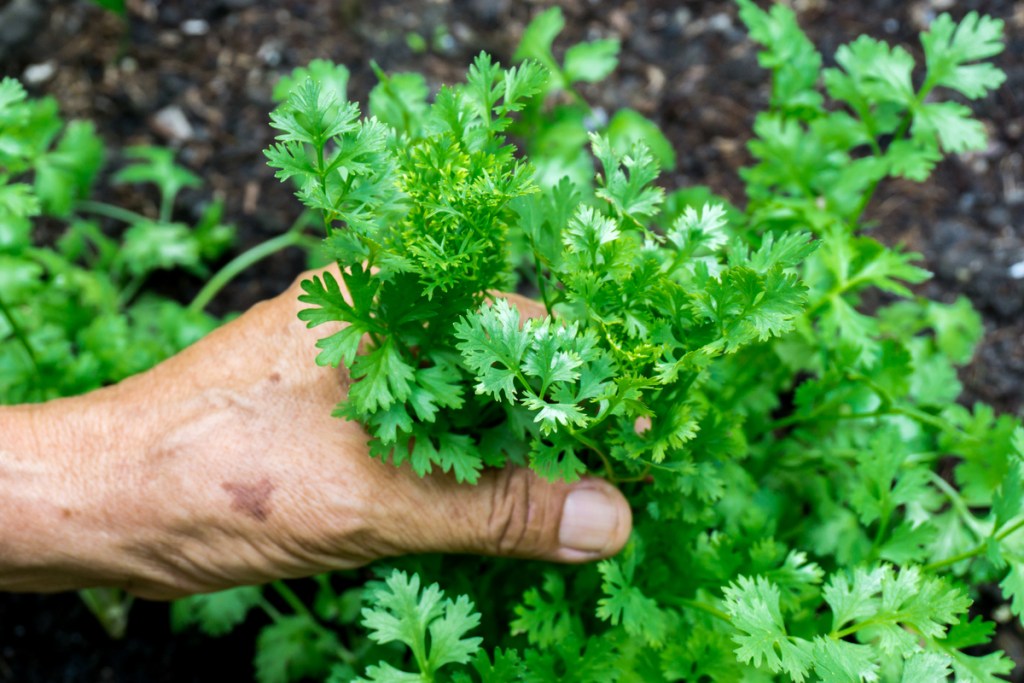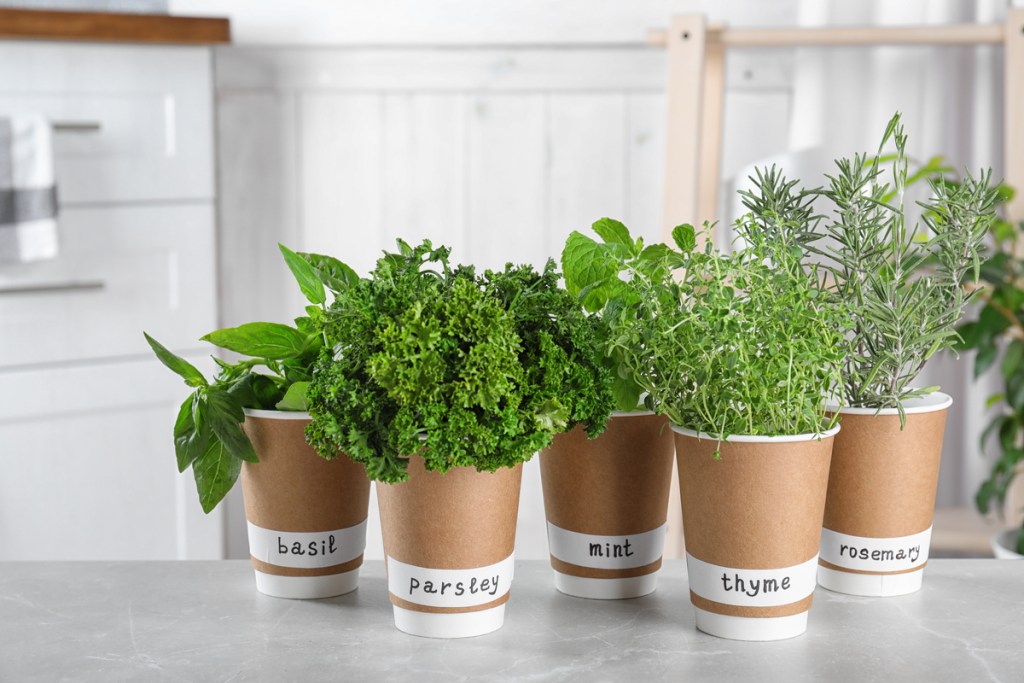It’s hard to know how often to water herbs when you’re growing them in containers. Container growing is different than growing in a garden bed, and the type and frequency of care will need to be adjusted. How often you water your herbs will not only depend on their specific care, but also other environmental and variable conditions.
Given all of this, how often should you be watering your indoor herb garden? While there’s no hard and fast rule, we’ve identified some great tips to make deciding that all the more simple.

How much water do herbs need?
Unlike outdoor gardens, there’s (hopefully) no chance of rain ever doing the watering for you. So, you will need to water your indoor herb garden regularly and be mindful to never let it fully dry out. For most herbs, you’ll be able to tell they need water when the top inch or so of soil is dry.
Because every plant is different and has its own needs — including light, temperature, humidity, etc. — you’ll have the most luck with watering your herbs if they’re in separate containers. In an indoor herb garden, this will also allow you more creativity with how you set it up, where you set it up, and how many herbs you include.
In most cases, your herbs won’t need to be watered every day. If this is the case, it may be due to:
- A location that’s too warm. If your herbs are in a space that’s too hot, they’ll likely dry out faster. This is easily solvable, as you can simply move them to a slightly cooler (but still sunny) spot.
- A pot that’s too small. If the herbs’ roots are taking up the whole pot, they need a larger home.
- A low humidity level in your home. To combat this, you can mist your herbs or fill a tray with small pebbles, cover them with water, and place the tray near your indoor herbs. As the water evaporates, the humidity around the plants will increase.
To water your herbs successfully, make sure you do so slowly and thoroughly. Watering too fast will cause the water to go through the soil as opposed to soaking into it. If you’re watering and still notice your herb plants drying out, this could be the case.
Can other conditions affect watering schedules and growth?
Yes! Other growing and environmental conditions can affect how often to water thyme, mint, cilantro, etc. Aside from just how often they prefer to be watered, things like temperature, humidity, the pot you use, and soil type will also change the watering frequency. Hotter temperatures and lower humidity mean the environment will be drier, which will dry out the soil faster.
In warmer summer months when there isn’t a lot of rain, you’ll find yourself watering your indoor herbs more often than you would in a cooler month. Similarly, when the humidity is higher, there’s more moisture in the air so the soil will retain the water better. This means that for a little bit, you’ll end up watering less often.
Time of year and garden type
The time of year (summer vs. winter) will also determine how often your herbs need watering. Warmer months mean longer, more direct sunlight, which causes the soil to dry out faster and require more watering. Watering becomes more infrequent in the winter because there are less daylight hours to dry out the soil. Time of year, however, doesn’t just refer to the calendar months or the season but also to the point in the growing cycle of your herb.
Plants have growing seasons and dormant seasons. For most, this coincides with warmer and cooler months respectively. When your plant is actively producing new growth, it will need more water for energy and nutrients. During a dormant season, it needs less to stay alive.
The type of garden you’re working with will also determine how much water your herbs need. With an indoor herb garden, you can choose to either keep your herbs in individual containers or in one container, depending on your space. If they’re all in one container, they may need less or more water depending on the type of care provided. That’s why it’s usually recommended that, for indoor herbs, you pot them in individual containers. You’re better able to monitor their watering needs that way, and there’s less risk of over/underwatering any of the plants.

The best indoor herb setup for your space
The best indoor herb garden design for you will depend on your space and the environmental conditions you need (or don’t need) to supplement. Some spaces are lucky enough to be the perfect environment for a variety of plants; however, some need additional gadgets to help create a place where plants can thrive.
These can vary between grow lights, fans, space heaters, etc., depending on what you’re trying to recreate. Grow lights will help you mimic natural outdoor lighting while space heaters will help warm up a room that’s a bit cooler than the rest of the house. Every person’s herb garden will be different, but with the right care and tools, you’ll easily have thriving plants.
Editors' Recommendations
- Stunning Monstera plants that you should add to your indoor plant collection
- The best Christmas herbs to grow to infuse the Yuletide spirit into your home
- Gardening 101: 7 easy seeds to grow in cups for a tiny, adorable, and low-maintenance indoor garden
- Use these tips to start a successful indoor vegetable garden this winter
- Add style to your space with these trendy alocasia indoor plants


